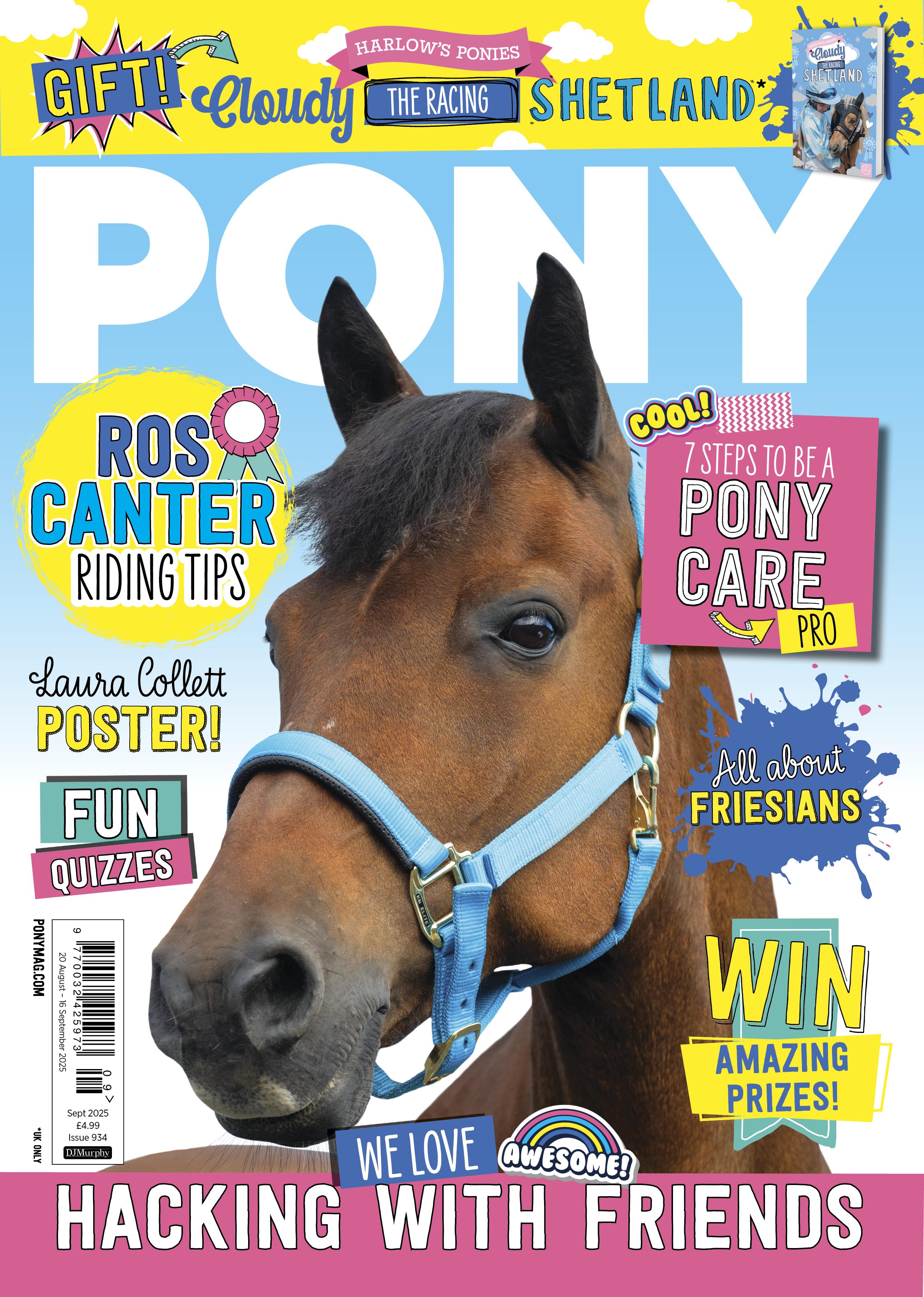

INSIDE your mag... INSIDE your mag...
PONY team adventures
who? Who’s who?
PONY magazine, Olive Studio, The Timber Yard, Grange Road, Tilford, Farnham, Surrey GU10 2DQ
Tel 01428 601020
Advertising enquiries 01428 601028
Email pony@djmurphy.co.uk
Team PONY
Editor-in-Chief Louise Kittle
Assistant Editor Sarah Burgess
Editorial Assistants Kirsty Lucas, Megan XavierWitherington
Head of Art and Design Sarah Garland
Deputy Head of Art and Design Adam Witt
Designer Lucy Claydon
Digital Marketing Manager Lianne Tadd
Marketing Assistants Alex Uren, Emily Weeks
Art Editor Paul Smail
Marketing Co-ordinator Alison Hill
Advertisement Manager Evie Edgar
Production Manager Eleanor Dunn
Executive PONY
Managing Director Zoe Cannon
Commercial Director Abi Cannon
Smooth operation PONY
Office Manager Vicki Owen
Accounts Manager Caroline Leishman
Accounts Executive Sarah Smith
Photography
1st Class Images, Adam Fanthorpe, Libby Law
Photography, Peter Nixon, Jon Stroud. arthorse, nigel baker photography, Chelle129, Alexia Khruscheva, Lenkadan, JW.photography31, Olga_i, Osetrik, Eleanor Scriven, Creative Travel Projects/ shutterstock.com, Oostendorp/peopleimages.com.
PONY subscriptions 01442 820580
Back issues ponymag.com/shop
Digital issues Visit the App store or Google Play
Printed by William Gibbon & Sons Ltd. Distributed by Marketforce
PONY magazine and Charlie are trademarks and copyright of DJ Murphy (Publishers) Ltd. No part of this publication may be reproduced or transmitted in any form or by any means without prior written authority from DJ Murphy (Publishers)
from such articles.
Articles, photos and drawings are welcome but we cannot be liable for their safe return. Please enclose an SAE.
You can read our full terms and conditions, and privacy and cookies policy at bit.ly/PONY_TERMS and bit.ly/PONY_PRIVACY
UK.
PONY supports social media safety – to have a Facebook, Instagram, Twitter or YouTube account you must be at least 13 years old. Always get your parents’ permission, too.
PONY recommends you wear an up-to-standard riding hat at all times when mounted. Who’s





We’re getting ready for the new academic year. It’s a great time to set new goals. And what better way to achieve them than with tips from a World Champion? This issue, Ros Canter shares some of her fave exercises. We’re been practising them and they really work – turn to page 6 to get started! We also reveal how to get the most our of your riding lessons – whatever you’re working on. Don’t miss our easy ways to maximise your riding time on page 18! Until next month!

Ask
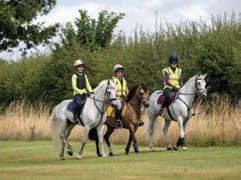
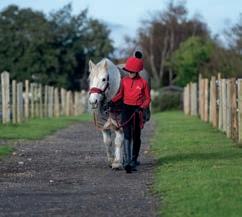
All about horsey routines on p48!
Why we love ponies so much...



Lou, PONY Ed They’re the best listeners!



Sarah, Assistant Ed A pony cuddle is the best cuddle.




Alex, Marketing The view between two ears – unbeatable.
Write to us at PONY mag, Olive Studio, The Timber Yard, Grange Road, Tilford, Surrey GU10 2DQ or email pony@djmurphy.co.uk
The minute I sat on Prince I knew we were going to be a great team!
Sarah, Assistant Ed
I’ll never forget seeing Ben’s sweet face for the first time over the stable door. Kirsty, Ed Assistant
DJMur phy
WIN WIN Design Harlow merch!

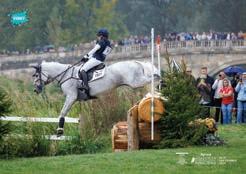
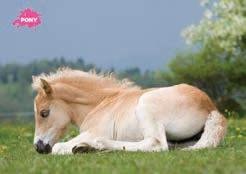


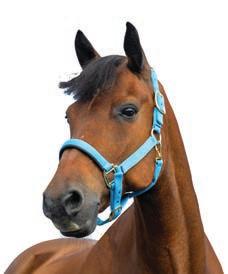
SUPERCHARGE SUPERCHARGE SUPERCHARGE SUPERCHARGE
YOUR STRAIGHTNESS
OUR EXPERT

Ros Canter is a five star event rider. She won Badminton and Luhmühlen this year, and helped Team GB win gold at Paris 2024!
Why is straightness important?
If your pony is straight, he will…
Pro rider Ros Canter shares her tips to keep your riding skills in check!
In training, I like to use simple exercises to help establish the core skills and set my horses up for success. Straightness is one of the scales of training, so it’s really important to work on it. In this feature I’m going to explain why and share two of my favourite exercises that will boost your skills! Let’s go!
ROS’S PRO TIP
• have even weight distribution and develop muscles more evenly
• stay in better balance
• have more impulsion
• be more supple
• have a reduced risk of injury
• be able to perform at his best!

When circling, glance down at your hands – are they level around the turn or are you crossing one hand over your pony’s neck to help him get back onto the correct line and stop his shoulders falling out? If so, try to use your legs to support your pony’s body around the turn a bit more, rather than your reins.
Transferring your skills
The exercises I’m going to share with you are great because they’re suitable for any type of pony, at any level and in any discipline – I even use them with my five-star champ, Lordships Graffalo, to check in on our straightness and controls!
Riding a truly straight line is so much harder than most people think, and while these exercises work on your pony’s straightness, they’ll do wonders for your riding, too. Our job in the saddle is to look one step ahead of what we’re doing, so we can prepare and guide our ponies. Starting with the simple flatwork exercise will help establish your skills so you can practise the system you’ll use when the fences are involved.

TOP TIP
Stick to walk when riding one-handed and let go of the rein slowly and gently to avoid spooking your pony. If you want to try circling with one hand, take your inside hand off the rein so you can still support your pony’s shoulders with your outside rein.
Exercise 1
flatwork
You’ll need two dressage boards or skinny poles positioned down the long side or centre line, at least 20m apart.
Step 1:
Start in walk and ride straight down the line over the two boards a few times on both reins. Have a go in trot and even canter when you’re ready.
Step 2:
Add in a circle between the boards to test your accuracy and ability to go from a straight line to a circle and back onto the same line again without a physical barrier such as the fence.
Step 3:
Go back to step one and have a go with your reins in one hand! This might sound super tricky, but if you can do it successfully then it means you have an independent seat and can communicate effectively with your pony without relying on the reins!
ROS’S PRO TIP

As you turn onto the line, pay attention to where your pony’s body is going using the poles as a guide – does he naturally drift to one side? Before you correct him, ask someone to help analyse your position in case you’re accidentally causing him to drift.
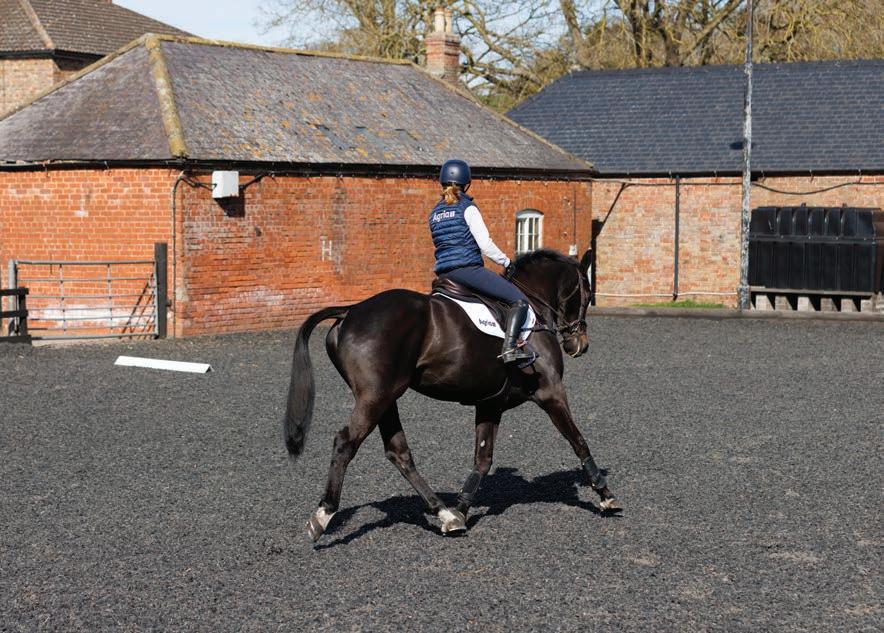
ROS’S PRO TIP
If your pony starts to rush or becomes nervous when you put your reins into one hand, get him used to the feeling by lightly releasing your grip at first then work up to moving your hand away completely.
feel confident mounting and dismounting mounting and dismounting
We share our tips to help you get on and off your pony!
Do you ever feel a bit wobbly before mounting or dismounting? Don’t worry, you’re not alone! We share our advice to help you understand and overcome these feelings so you can enjoy hours of horsey fun!
Natural feelings
Natural feelings
So why does mounting and dismounting sometimes feel worrying, even when you’ve done it hundreds of times before? Feeling nervous is actually your body’s clever way of trying to protect you. It’s like a little alarm system to prepare you for any tricky situation that might occur. And it’s a totally normal feeling when you’re doing something exciting – and maybe a little bit scary – like getting on or off your pony.
The good news is, the more you ride, the more confident you’ll feel, and those butterflies will start to disappear.
Top tip
Before getting on, check your pony’s girth is secure to avoid the saddle slipping, and ensure your stirrups are down.
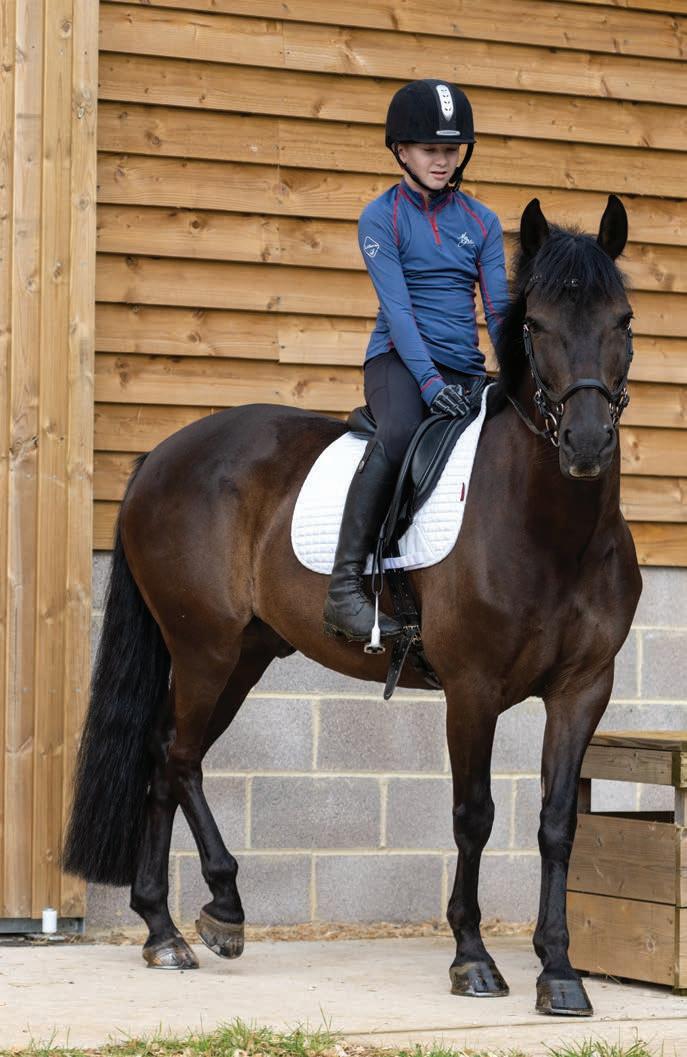

did you know?did you know?
Using a mounting block to get on, instead of getting on from the floor is much better for your pony’s back. Plus, it make it easier for you to get on – ideal!
Top tip
Ask a helper to hold onto your pony and his right stirrup to even out the weight as you push into the left stirrup to mount.


Top tip
Remember to give your pony a big scratch and tell him he was a superstar once you’ve dismounted.
Mounting
1. Walk your pony towards the mounting block with his left side closest to it, so you can get on from the left-hand side. Ask him to stand still.
2. Keeping hold of the reins, step onto the mounting block.
3. Prepare to get on by holding the reins in your left hand and reaching over to place your right hand on the panel on the right side.
4. Place your left foot in the stirrup, keeping a soft bend in your knee.
5. Gently push up from the mounting block with your right foot and slowly swing your right leg over your pony’s back – as you do so, move your right hand onto the pommel.
6. Lower yourself down into the saddle gently.
7. Gather your reins and find your right stirrup.
8. Check your girth again, then ask your pony to walk on.
disMounting
1. Ask your pony to stand still on a safe, level surface.
2. Take both of your feet out of the stirrups.
3. Place your reins into your left hand and put your right hand on the pommel of the saddle.
4. Lean your upper body forward slightly and swing your right leg up over the top of your pony’s hindquarters, around the back of the saddle.
5. As your legs come together, let go of the saddle to reach the floor, bending your knees on landing.
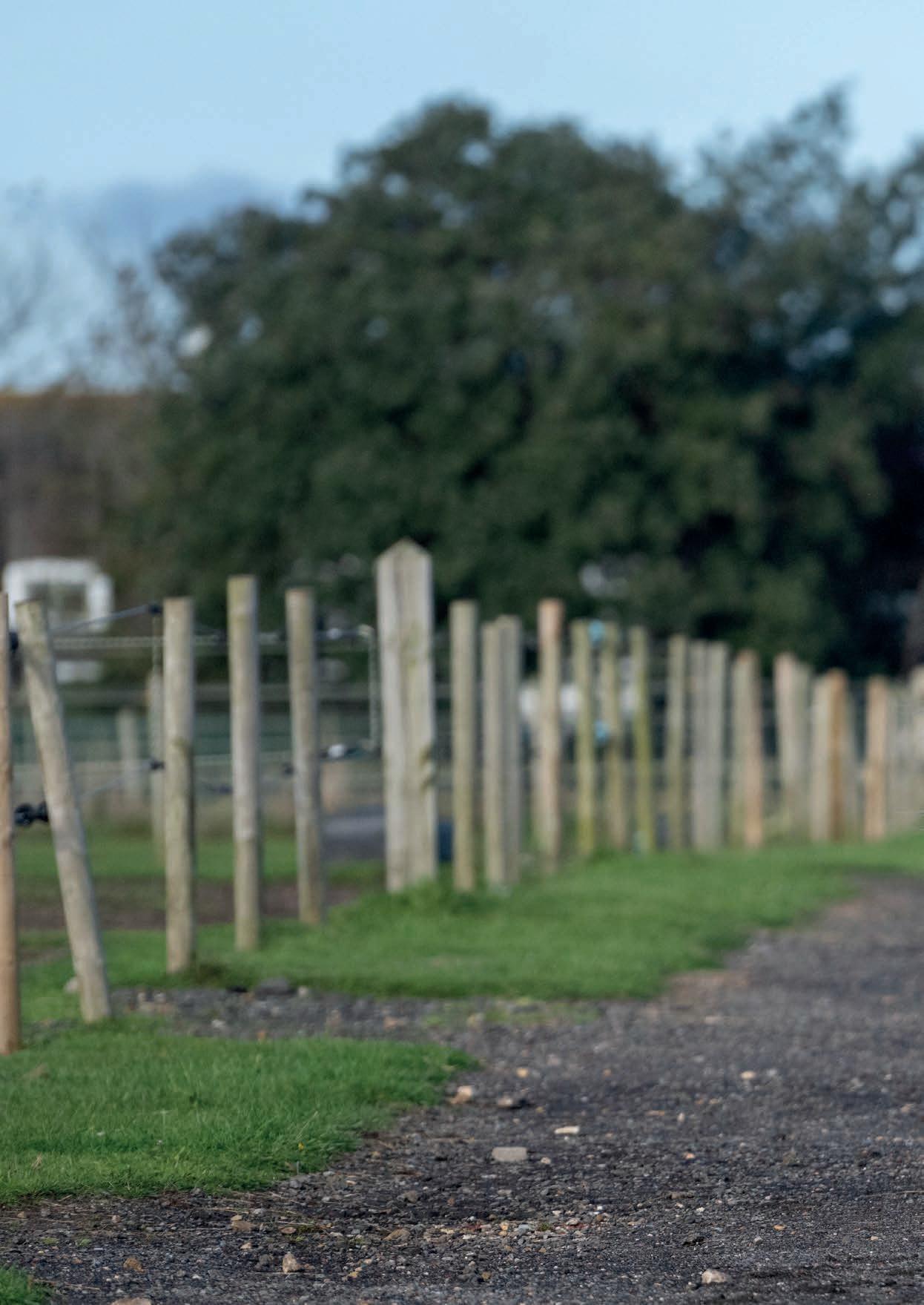
finding
the right routine
the right routine routine
top tip
Ponies thrive off routine, so try to stick to similar feeding and turnout times each day to help reduce stress.
Is your pony’s routine right for him? Here are seven things to consider!
There are so many things to think about when finding the right routine that will help you pony stay healthy and thrive. Check out our guide to getting it just right!
Each season brings different challenges, so it’s important to tweak your pony’s routine to make sure he’s happy and healthy all year round! did you know?did you know?
Turnout time 1 1
Time in the field is not only beneficial for your pony’s physical health, but for his mental health, too. Feral ponies roam up to 20 miles per day, which helps to keep their minds busy and bodies mobile. Most ponies are happy and able to live out 24/7, but if your pony needs to come into a stable, incorporating turnout into his daily routine is super important.
It’s common to adjust whether your pony goes out during the day or overnight, depending on the season. During summer your pony might prefer to come in during the day to escape the heat and the flies, and go out over night when the temperatures are lower.
In winter, it may be that your pony is stabled overnight when the temperature drops.
top tip
If your pony is going to be the last one in the field then it’s worth asking someone to bring him in so he’s not left alone.
Time
in the field is not only beneficial for your pony’s physical health, but for his mental health, too
Feeding the right way 2 2
Ponies have evolved to eat little and often, so it’s important not to overload his tummy with bucket feed as it could cause issues such as colic.
If your pony needs a bucket feed, split his ration up into small feeds throughout the day to allow for healthy digestion.


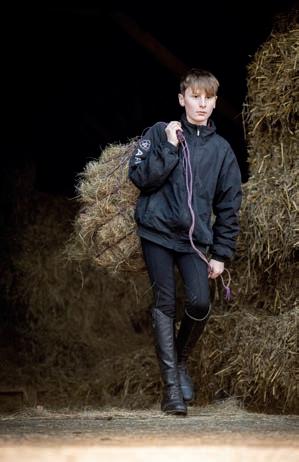
Ponies can eat for up to 18 hours per day, so it takes up most of their daily routine!
Whether your pony is out in the field or in his stable, having forage available is important to keeping him happy and healthy.
If your pony’s field has limited grazing then providing forage such as hay or haylage is ‘essential.
Ponies teeth continue to grow and grazing helps to naturally grind them down, preventing teeth from becoming long and sharp – ouch! did you know?did you know? 4 4
3 3 Keep it interesting
Whether or not you love to compete, adding variety to your pony’s exercise regime will help to prevent boredom and keep each day fun for him.
If you can, try to have a mix of groundwork, schooling, hacking, poles and jumping. Not only will it keep him interested but it will help to strengthen his whole body without overloading any particular area – ideal!

